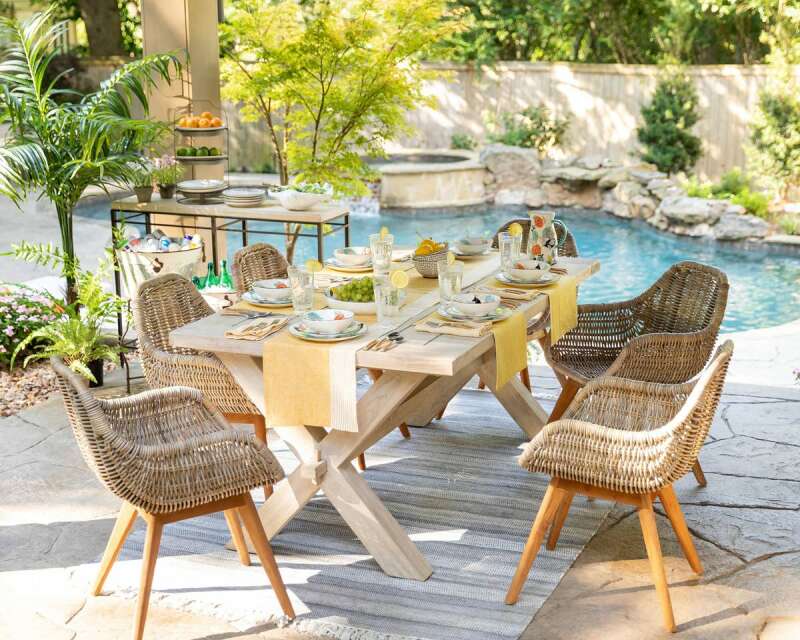When it comes to selecting outdoor furniture, many factors come into play: durability, aesthetics, and cost. However, one crucial aspect often overlooked is the environmental impact of the materials used. Teak wood, known for its strength and beauty, is a popular choice for outdoor furniture. But what are the environmental implications of opting for teak? In this article, we delve into the environmental impact of choosing teak for your outdoor furniture.
Understanding Teak Wood
Teak (Tectona grandis) is a tropical hardwood tree native to the forests of South and Southeast Asia. It has been prized for centuries for its exceptional durability, natural resistance to decay, and beautiful golden-brown color. These qualities make teak an ideal material for outdoor furniture, particularly in settings exposed to the elements.
Teak wood contains natural oils and silica, which contribute to its weather-resistant properties. These oils also make teak highly resistant to pests, such as termites and fungi, reducing the need for chemical treatments.
Environmental Concerns
While teak offers numerous benefits for outdoor furniture, its production raises significant environmental concerns. The harvesting of teak trees can have detrimental effects on tropical forests and biodiversity.
Teak logging often involves clear-cutting, a practice where entire sections of forests are cut down, leading to habitat destruction and loss of biodiversity. Additionally, illegal logging of teak trees is prevalent in some regions, further exacerbating deforestation and environmental degradation.
Furthermore, the demand for teak wood has led to unsustainable logging practices, where trees are harvested at a rate faster than they can naturally regenerate. This unsustainable harvesting threatens the long-term viability of teak forests and contributes to deforestation, a major driver of climate change.
Sustainable Alternatives
Fortunately, there are sustainable alternatives to traditional teak wood that offer similar durability and aesthetic appeal. One such alternative is reclaimed teak, which involves using recycled teak wood from old structures, such as barns, boats, and buildings.
Reclaimed teak not only reduces the demand for new teak wood but also minimizes waste by repurposing existing materials. Additionally, certified sustainable teak, harvested from responsibly managed forests, is another eco-friendly option for outdoor furniture.
Another sustainable alternative to teak is bamboo. Bamboo is a fast-growing grass that matures in just a few years, making it a highly renewable resource. Bamboo furniture is not only environmentally friendly but also durable and stylish, offering a viable alternative to traditional hardwoods like teak.
Conclusion
While teak remains a popular choice for outdoor furniture due to its durability and aesthetic appeal, it’s essential to consider the environmental impact of its production. The harvesting of teak trees contributes to deforestation, habitat loss, and biodiversity decline, posing significant threats to our planet’s health.
As consumers, we have the power to make environmentally responsible choices by opting for sustainable alternatives to traditional teak wood. Whether it’s reclaimed teak, certified sustainable teak, or bamboo, choosing eco-friendly materials for outdoor furniture can help mitigate the environmental impact of our purchasing decisions and promote a more sustainable future.
By making informed choices and supporting environmentally conscious practices, we can enjoy beautiful outdoor spaces without compromising the health of our planet.
Reference:
